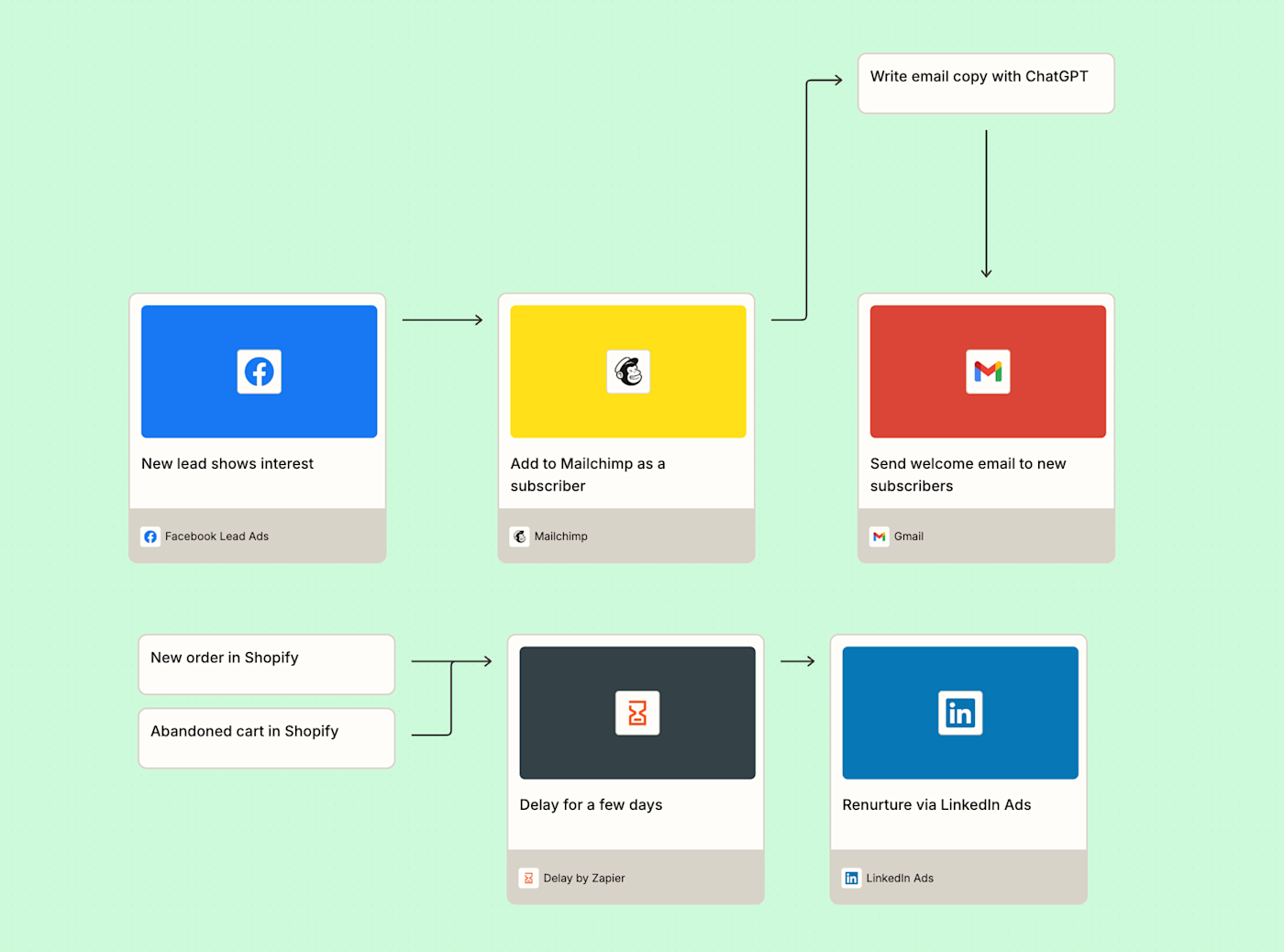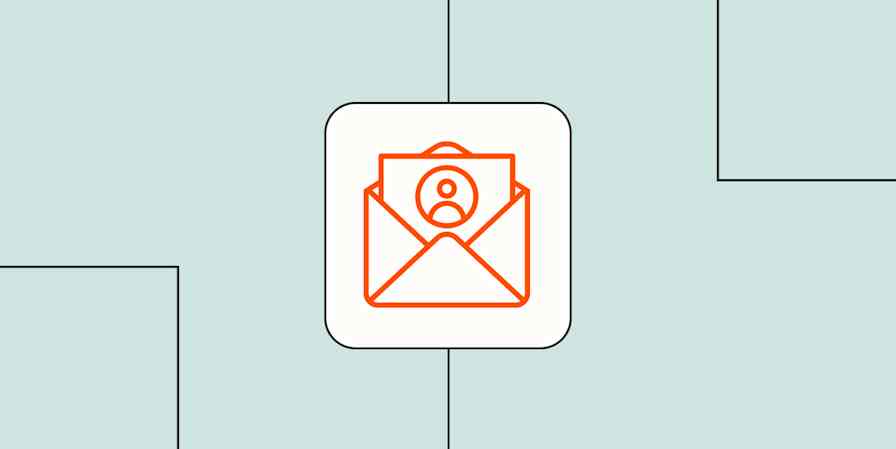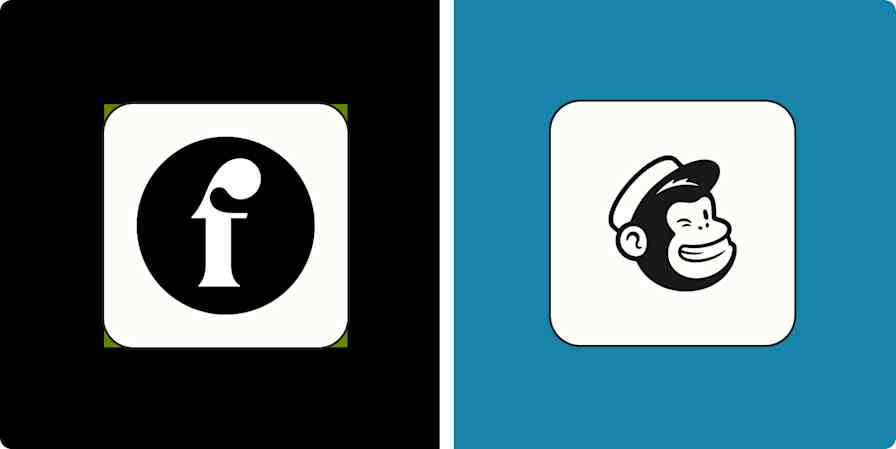Let's say you buy your dog's favorite treats online. As soon as you hit that purchase button, you'll receive an email confirmation. Probably a shipping update, too. And a delivery success message once those goodies have arrived.
That's email automation at its finest.
But then let's say you receive a welcome email which offers you tips and resources on pet care. Next, you get a thank-you discount on poodle carriers for giving a five-star review. A few weeks later, you might even receive a follow-up with recommendations for complimentary products.
Those are all examples of email marketing. They're intended to deliver timely, personalized content to you, the customer, to deepen engagement and encourage repeat purchases.
Every industry benefits from email marketing. Your own customers need it. But to do email marketing right, you need a game plan. Specifically, you need an automation game plan.
In this guide to email marketing automation, we'll walk you through what it is, how it works, best practices, and how you can get the most out of it with Zapier. From re-engaging lost subscribers to automatically sending your audience drip campaigns, here's exactly how you can leverage the best email marketing automation tools and scale your email marketing campaigns.
Zapier is the most connected AI orchestration platform—integrating with thousands of apps from partners like Google, Salesforce, and Microsoft. Use interfaces, data tables, and logic to build secure, automated, AI-powered systems for your business-critical workflows across your organization's technology stack. Learn more.
Table of contents
What is email marketing automation?
Email marketing automation is the use of software, predefined rules, and automated workflows to send messages based on specific actions your leads, subscribers, or customers take. Instead of relying on one-size-fits-all blasts, you can trigger personalized emails after certain events, like when someone signs up for a webinar or clicks through your website.
It's a way to send tailored messages at scale, based on what customers actually do (or don't do, like abandoning a cart) to drive engagement and ultimately revenue.
Although we'll touch on this a bit later on, there are loads of different types of marketing emails you can automate. That might include newsletters, product announcements, onboarding sequences, or promotional campaigns.
With the right email marketing automation tools in place, your marketing team won't need to babysit subscriber lists or manually hit send. Whether you're welcoming a new customer, guiding leads through a nurture sequence, or following up after a purchase, automation ensures your most relevant content lands in the right inbox at the right moment.
Email marketing automation vs marketing automation
While they sound similar, email marketing automation and marketing automation aren't quite the same thing.
Marketing automation refers to the broader set of automated marketing activities that span multiple channels, from SMS to social media and beyond. It involves managing each and every touchpoint across the entire customer journey, from first capturing leads to nurturing them and capturing feedback.
Email marketing automation, on the other hand, is focused specifically on automating email campaigns: sending welcome emails, segmenting subscribers, and scheduling follow-ups.
There's even some overlap with email automation, which refers to automating more operational workflows like logging emails, sending transactional messages, or cleaning up your inbox.
The takeaway? Email marketing automation and email automation fall under the umbrella of marketing automation, while marketing automation covers a wider strategy that connects multiple tools, teams, and touchpoints. Email is just one (very powerful) piece of the puzzle and marketing automation brings the entire journey together.
If you're using tools like HubSpot, Mailchimp, Brevo, or ActiveCampaign, you're probably already doing some email marketing automation. But with the right email marketing strategy, you can build fully automated email systems that scale with you as you grow.
Email marketing automation best practices
Email marketing requires a battle plan. There's a fine line between being helpful and ending up in someone's spam folder.
If you want to stand out, you'll need more than just a good subject line. You need an automation strategy. Below are a few best practices with extra tips to help you get the most out of your email marketing automation efforts.
Define the full customer journey
To get the most out of automation, you'll first need to map out the complete experience. That means planning each step of the journey. What happens after someone subscribes? Or buys something? Or goes inactive? You can start simple with a few of your most important touchpoints, but a clearly defined journey from the get-go helps you move people from awareness to action.
Pro tip: Use Zapier Canvas—a free AI-powered diagramming tool—to map out processes and workflows from scratch. Start empowering your email automation strategy.
Personalize your messages based on behavior
One-size-fits-all emails rarely work anymore. Even simple personalization, like using the subscriber's first name or referencing a recent interaction can significantly increase open and click-through rates. By connecting your whole tech stack, you can go further by tailoring content to specific interests, products, or actions that happen in other apps.
Pro tip: Personalization doesn't need to be flashy to be effective. Start with practical data you already have like product type, location, or signup source and use that to guide your messaging. The most impactful emails often come from the smallest details.
Track performance and iterate
Every automated email is a chance to learn about your audience. Monitor open rates, click-throughs, and conversions to see what's working and adjust accordingly. Pay attention to what people ignore, too: low engagement might mean your timing, message, or segmenting needs work.
Pro tip: Use A/B testing to experiment with subject lines, CTA language, or send times.
Prioritize customer retention
Acquiring new customers is expensive. That's why retaining the ones you already have is where your email automation strategy can really pay off. Set up reorder reminders or win-back campaigns that keep your brand top of mind and your customers engaged over time.
Pro tip: If someone hasn't made a purchase in 60 days, send a personalized product recommendation or a loyalty incentive.
Segment your audience to stay relevant
Not every subscriber needs the same message. Someone who just signed up for your newsletter isn't in the same headspace as a long-time customer making their fifth purchase. You can automatically group contacts based on behavior, purchase history, or engagement level and then tailor your messaging to match.
Pro tip: Start small. Segment by one or two high-impact traits like "first-time buyer" or "no activity" and build from there. Even basic segmentation can lead to a big lift in engagement and conversions.
Use the right email types at the right time
Effective email marketing automation isn't just about what you send—but when. Different types of emails serve different purposes:
Welcome emails greet new subscribers and set expectations
Drip campaigns warm up your audience with timely messages
Newsletter emails share product updates, stories, and content
Lead nurturing emails educate and move prospects through the funnel
Promotional and dedicated emails spotlight offers or launches
Confirmation and transactional emails confirm purchases or account actions
Invite emails re-engage customers with webinars, events, or new launches
Mapping these email types to your automation workflows ensures each message delivers the right value at the right time.
Automate your email marketing with Zapier
Now that you're armed with these best practices, it's time to take your strategy to the next level with Zapier.
Zapier is the most connected AI orchestration platform—integrating with thousands of tools like Mailchimp, ActiveCampaign, Salesforce, and Shopify.
With automated workflows called Zaps, you can connect your email marketing platform to the rest of your tech stack and streamline your email processes. For example, when someone signs up for your newsletter, Zapier can automatically add them to your email list, send a welcome email, and even update your CRM. By automating these email marketing processes, you free up more space to focus on scaling your messaging and driving strategic impact.
Send automated drip campaigns to new leads
Whether you're using advertising tools like Facebook Lead Ads to collect contact info or form apps like Typeform to capture qualified leads, adding them to a dedicated drip campaign is a great way to move them through your funnel.
But manually exporting and uploading each and every contact into your email marketing platform simply isn't sustainable. Plus, it increases the risk of missed opportunities.
Instead, you can use these Zaps to connect your lead source directly to apps like Mailchimp or ActiveCampaign. Every new contact is instantly added to the right drip campaign, no manual list management needed.
More details
Note: Make sure your subscribers have consented to receive marketing communications from you before you add them to your list to comply with anti-spam and privacy laws.
Send newsletter subscribers welcome emails
First impressions matter, especially when someone has just subscribed to your newsletter. A personalized welcome email can set the tone for your entire relationship with new subscribers and significantly improve engagement rates.
Instead of relying on generic automated sequences, you can create more personal touchpoints using Zapier to trigger welcome emails whenever you get a new subscriber.
More details
More details
More details
Once you've added new leads to your email marketing list, don't forget to loop in sales. If a contact subscribes to your newsletter or engages with a key email, you'll want that information reflected in your CRM. That way, your sales team has full visibility into their journey.
With Zapier, you can automatically update CRM tools like HubSpot or Salesforce based on subscriber activity, so your reps always have the latest context when following up with customers.
More details
More details
Automatically segment subscribers
The more tailored your messaging, the better your results. But tagging contacts and segmenting them manually can be a real drain on team resources, especially as your audience grows.
With Zapier, you can automatically apply tags or add subscribers to the right list in your email marketing platform based on actions they take in other apps, like registering for a webinar, submitting a form, or completing a purchase. That way, each subscriber is instantly sorted into the right campaign or segment, no manual segmentation needed.
More details
More details
Want to take segmentation even further? You can use AI tools like ChatGPT in your Zaps to automatically analyze or summarize subscriber behavior based on customer emails or notes in your CRM. Zapier will then assign each lead with intent-based tags like "high interest" and automatically add them back to your CRM or log them in a spreadsheet.
That way, you're not just segmenting effectively, you're also making your messaging smarter, more targeted, and scalable.
More details
More details
Re-engage cold leads or upsell to existing customers
Losing subscribers or leads to inactivity doesn't always mean you've lost them for good. They may have gone quiet simply because the timing wasn't right or your content wasn't hitting the mark. With email marketing automation, you can proactively re-engage cold leads or nurture existing customers toward their next purchase.
If someone unsubscribes or stops engaging, you can automatically retarget them through ad platforms like LinkedIn or Google Ads with one of these Zaps.
More details
And for existing customers, you can use purchase behavior or abandoned carts in platforms like Shopify or WooCommerce to trigger upsell or cross sell campaigns. That might mean recommending related products, offering time-sensitive discounts, or showcasing advanced features.
More details
More details
More details
Use AI with your email marketing
A big part of email marketing is sending the right message at the right time, but crafting personalized content at scale can be a challenge. You want your emails to feel human and relevant, not canned or generic.
That's where AI comes in.
With Zapier and tools like ChatGPT, you can automatically generate tailored email drafts based on recent customer inquiries or customer information in your CRM. That way, your messages always match the moment.
More details
More details
Stay on top of your transactional emails
If you use forms to process key actions (think customer orders or password reset requests), your users expect to hear from you immediately. Confirmation emails and transactional follow-ups aren't just nice to have; they're essential for building trust and delivering a smooth customer experience.
With Zapier, you can automate these types of emails using tools like SendGrid and Mailchimp Transactional. That way, every message is sent the moment a form is submitted. Seamless, right?
More details
More details
More details
Streamline email marketing automation at scale
The best way to streamline your email marketing automation processes is to go beyond simple, two-step Zaps and think about your overall marketing strategy. When you step back and look at the bigger picture, you can uncover opportunities to improve how you segment, personalize, and scale your campaigns—without adding manual overhead.
For example, here's a visualization (built in Zapier Canvas) of how a marketing team might design an automated email marketing strategy that captures leads, assigns behavior-based tags, sends personalized drip sequences, and re-engages customers across multiple channels.
Email remains one of the most effective ways to connect with your audience, but it's even more powerful when it's part of a well-orchestrated system.
With Zapier, you can connect your forms, CRMs, ad platforms, and eCommerce tools to your email campaigns, so every part of your funnel is aligned and working together to drive results.
Related reading:
This article was originally published in December 2020, written by Jasmine Williams. It was most recently updated in June 2025 by Elena Alston.










